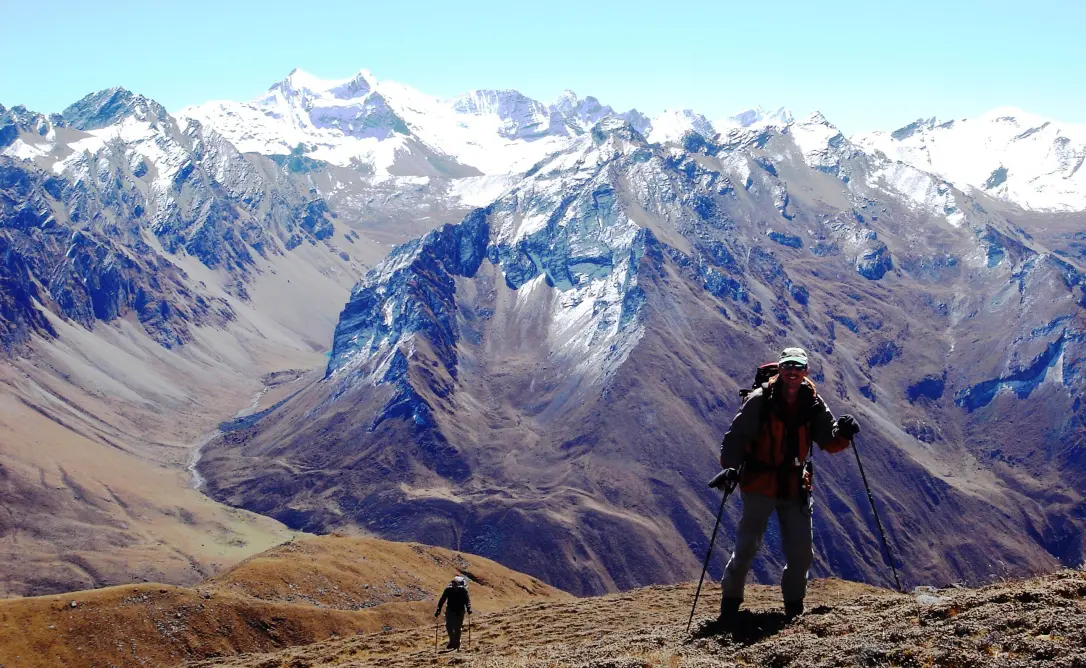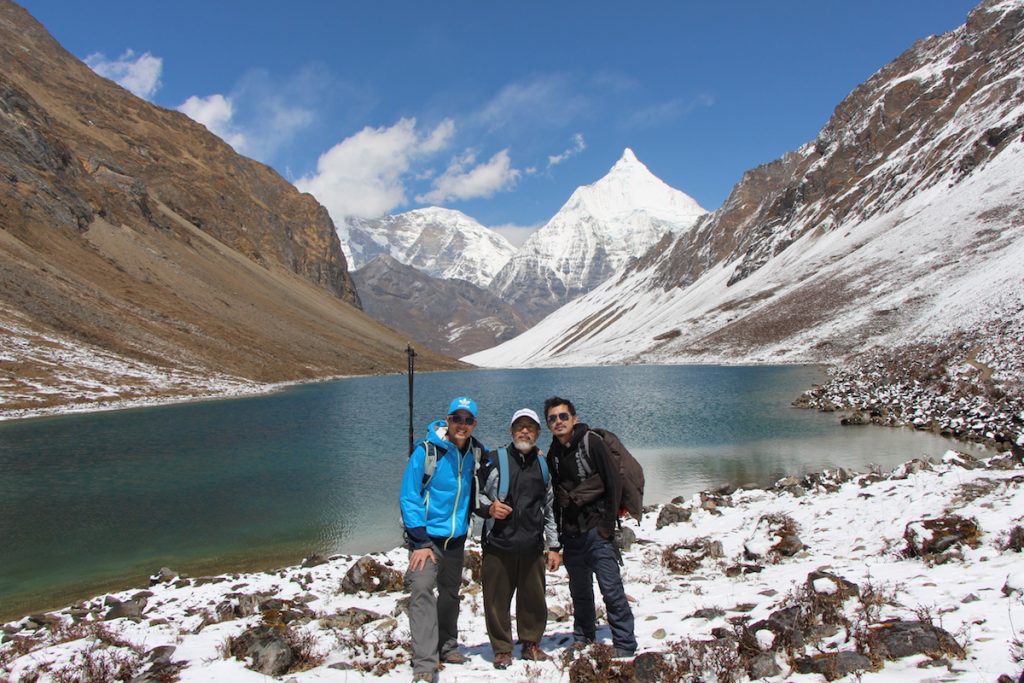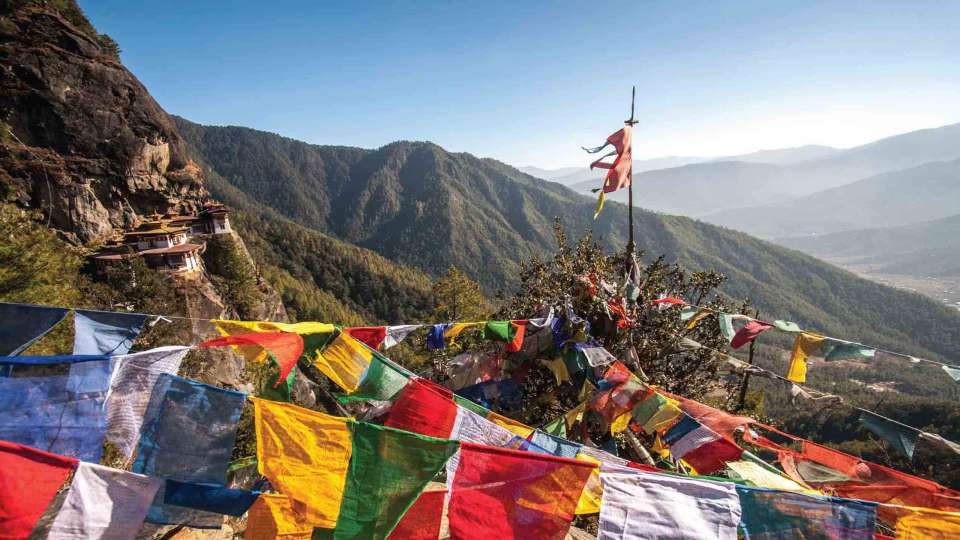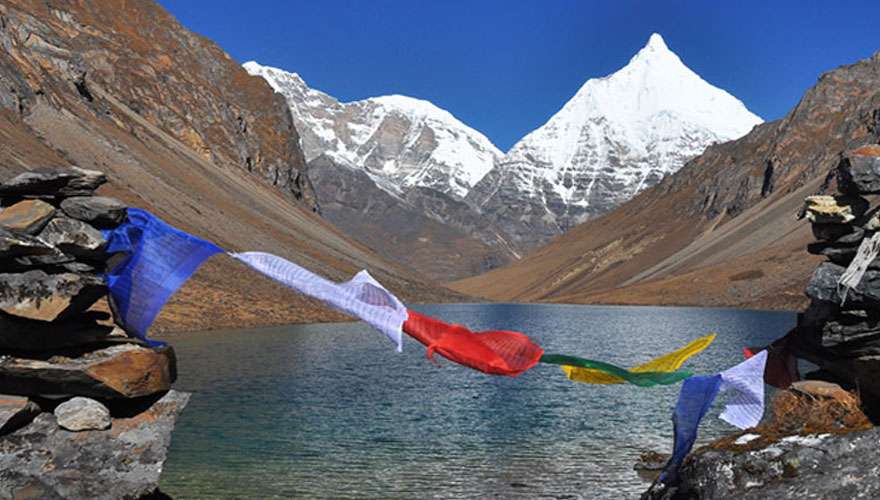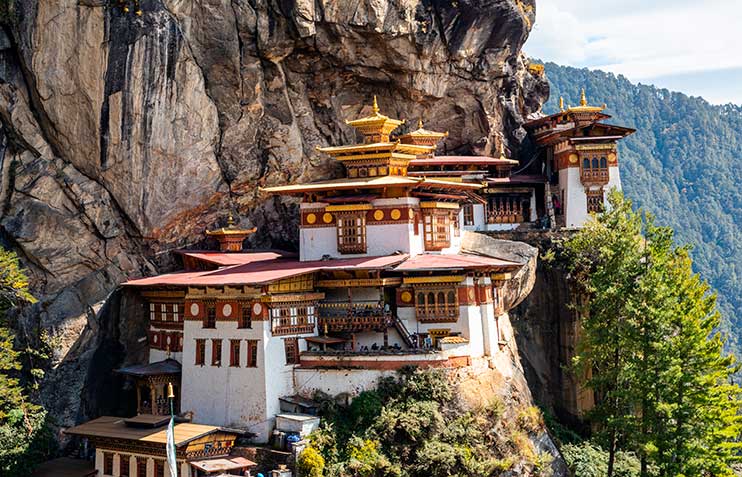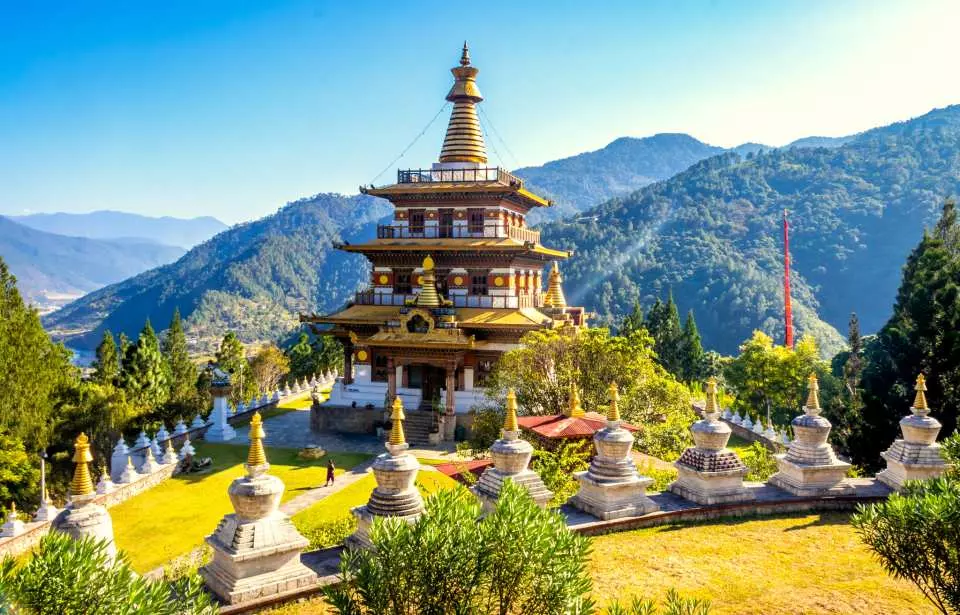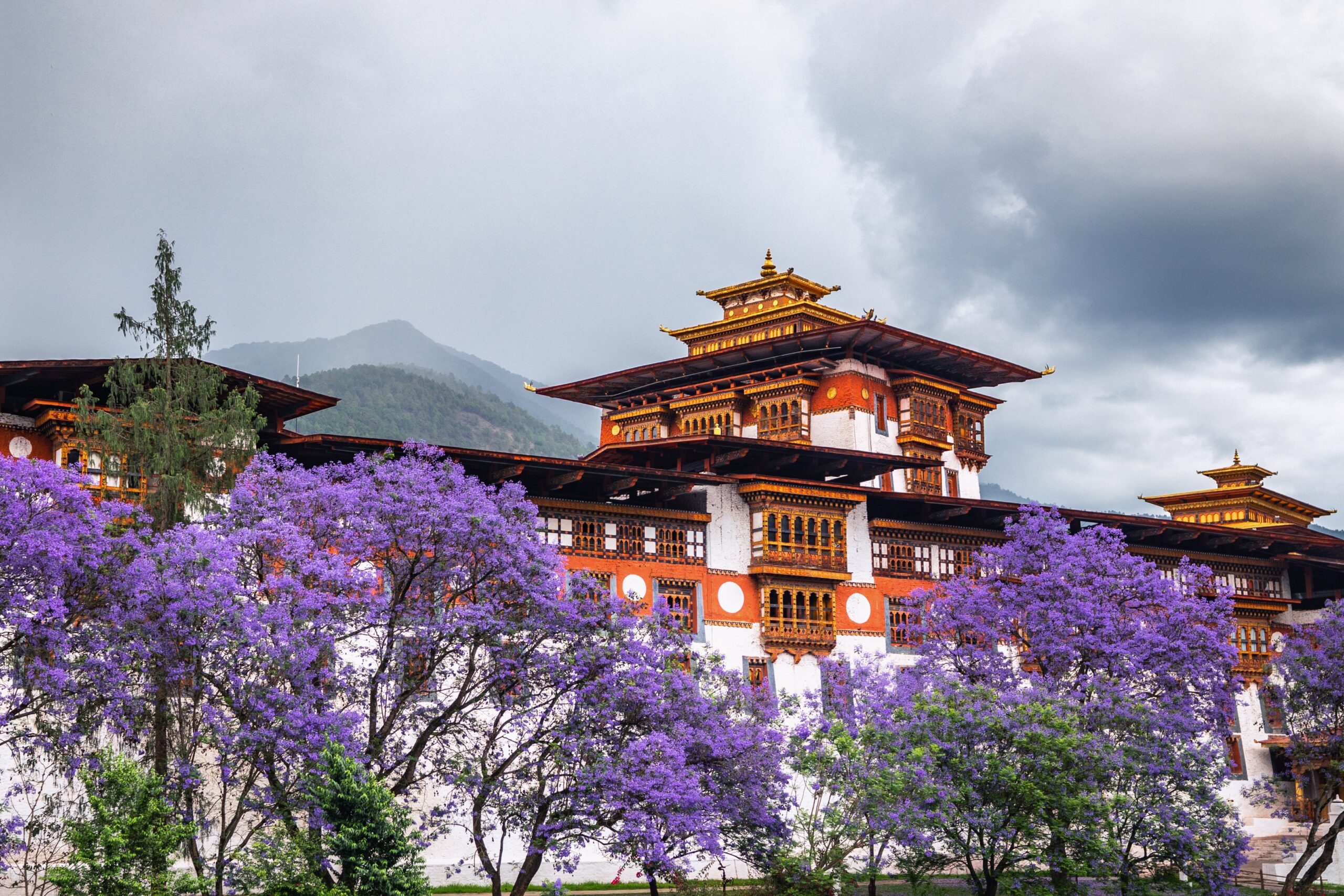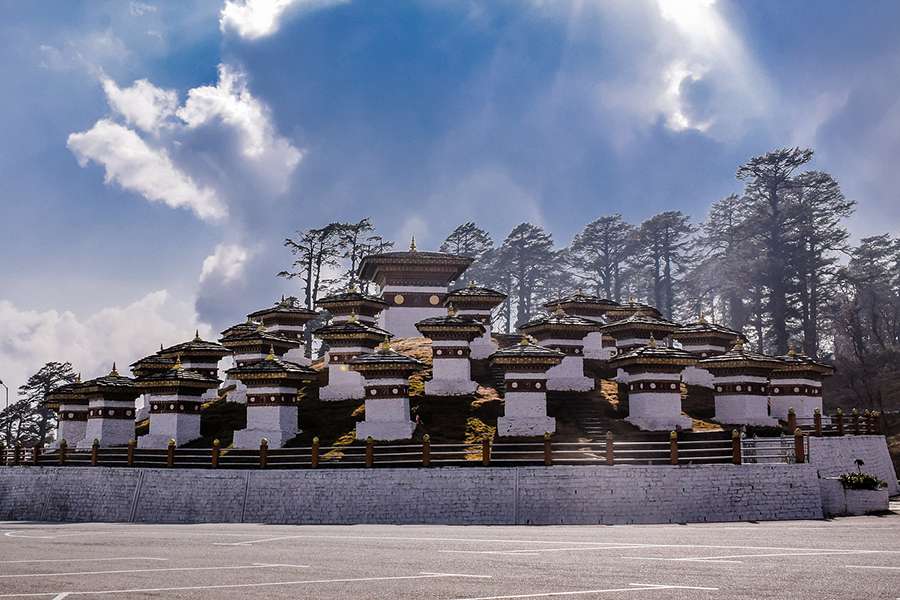About Bhutan – The Kingdom in the Clouds
Bhutan, officially the Kingdom of Bhutan, is a landlocked country located in South Asia, nestled in the Eastern Himalayas between China to the north and India to the south, east, and west. With a land area of 38,394 square kilometers and a population of around 787,424 (as of the 2023 census), Bhutan may be small in size, but it is monumental in terms of cultural integrity, environmental preservation, and national identity.
Often called the "Land of the Thunder Dragon" (Druk Yul in Dzongkha), Bhutan is one of the most intriguing and spiritually rich countries in the world. Isolated for centuries, it opened up cautiously to the outside world in the late 20th century. Today, it balances tradition and modernity through its guiding development philosophy—Gross National Happiness (GNH).
Geography and Natural Beauty
Bhutan’s geography is characterized by dramatic variations in elevation, ranging from subtropical plains in the south to Himalayan peaks over 7,000 meters (23,000 feet) in the north. The country's highest peak, Gangkhar Puensum, is also the highest unclimbed mountain in the world, symbolizing Bhutan’s spiritual reverence for nature.
The landscape includes dense forests, alpine meadows, glacial rivers, and deep valleys. Bhutan is one of the most biologically diverse countries in Asia, hosting rare wildlife such as the Himalayan takin, red panda, snow leopard, and golden langur. Over 70% of Bhutan’s land area is covered by forest, and it is the world’s only carbon-negative country, absorbing more carbon dioxide than it emits.
Bhutan at a Glance
Area: 38,394 sq. km
Capital: Thimphu
Population: 787,424 (2023 census)
Official Language: Dzongkha
Currency: Ngultrum (BTN); also accepts Indian Rupees (INR)
Political System: Constitutional Monarchy
Religion: Mahayana Buddhism (Drukpa Kagyu sect)
Time Zone: Bhutan Time (BTT), UTC+6
Ethnic Groups: Ngalops, Sharchops, Lhotshampas
Highest Peak: Gangkhar Puensum (7,570 m)
Protected Forest Cover: Over 70% of total land
Climate and Seasons
Bhutan’s climate varies by altitude:
Winter (Dec–Feb): Cold, especially in the north. Temperatures range between -5°C to 10°C.
Spring (Mar–May): Pleasant and ideal for trekking, with temperatures between 7°C and 22°C.
Summer/Monsoon (Jun–Aug): Warm with heavy rainfall, especially in the south. Average highs can reach 30°C.
Autumn (Sep–Nov): Cool and clear skies, perfect for festivals and sightseeing. Temperatures range from 1°C to 25°C.
Tourism and the "High-Value, Low-Volume" Approach
Bhutan’s tourism model is unique and purposefully restrictive. By promoting "high-value, low-impact" tourism, Bhutan aims to protect its culture and environment from the pitfalls of mass tourism. Visitors are required to pay a Sustainable Development Fee (SDF) and book through registered tour operators.
Top attractions include:
Tiger’s Nest Monastery (Paro Taktsang): Bhutan’s most iconic spiritual site, clinging to a cliffside at 3,120 meters.
Punakha Dzong: One of the most beautiful and historically important dzongs in Bhutan.
Thimphu: The capital city blends modern governance with traditional architecture, with attractions like the Buddha Dordenma, National Memorial Chorten, and Folk Heritage Museum.
Bumthang Valley: Known as the spiritual heartland of Bhutan, rich in monasteries and legends.
Trekking routes like the Snowman Trek, Druk Path Trek, and Jomolhari Trek offer unmatched Himalayan adventure.
Culture and Religion
Bhutan is the last remaining Vajrayana Buddhist kingdom in the world. The state religion, Drukpa Kagyu (a school of Mahayana Buddhism), deeply influences Bhutanese society, architecture, and day-to-day life. Monasteries, stupas, and prayer flags are omnipresent across the landscape, and spiritual leaders such as the Je Khenpo (chief abbot) hold immense social influence.
Cultural identity is maintained through a unique national dress code—men wear the gho and women the kira—and through distinctive architecture, especially dzongs (fortress-monasteries), temples, and traditional houses adorned with intricate woodwork.
Festivals, known as Tsechus, are major cultural events held in various dzongs. These feature masked dances, folk music, and rituals performed to honor Guru Rinpoche, who introduced Buddhism to Bhutan.
Ethnic Groups and Languages
The population of Bhutan comprises three primary ethnic groups:
Ngalops: Mainly in western Bhutan, considered the political and cultural elite.
Sharchops: Indigenous to eastern Bhutan and believed to be the earliest inhabitants.
Lhotshampas: People of Nepali origin residing in southern Bhutan.
While Dzongkha is the national language, Bhutan is linguistically rich with over 19 recognized languages, including Sharchopkha, Tshangla, and various Tibetan dialects.
Government and Political System
Bhutan transitioned to a constitutional monarchy in 2008. The Druk Gyalpo (Dragon King) is the head of state, currently King Jigme Khesar Namgyel Wangchuck, while executive powers rest with the elected Prime Minister. The Constitution guarantees civil rights and upholds Bhutanese values rooted in Buddhism and national unity.
The Gross National Happiness (GNH) index reflects Bhutan’s commitment to holistic development, emphasizing sustainable development, cultural preservation, environmental conservation, and good governance.
